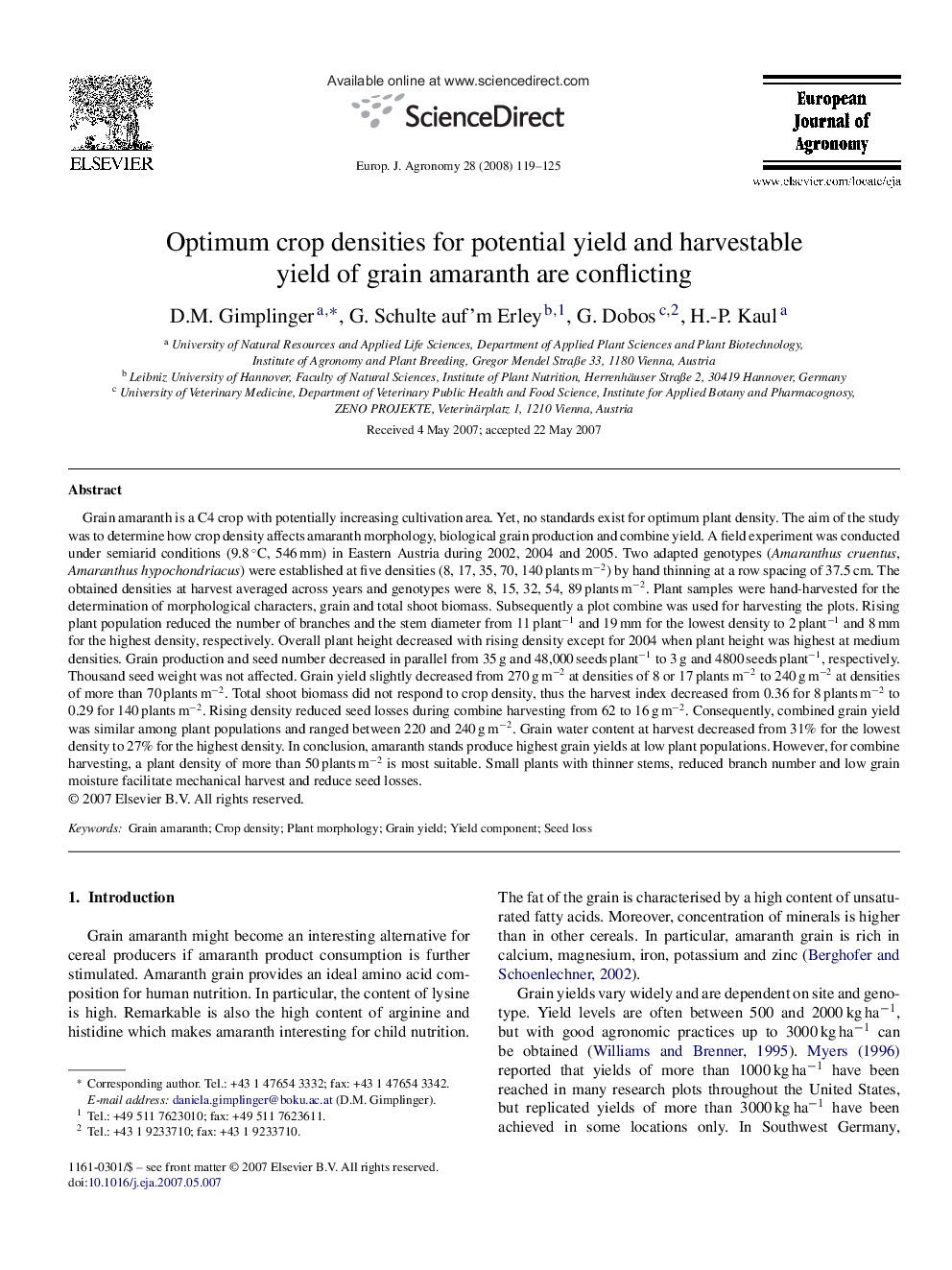| Article ID | Journal | Published Year | Pages | File Type |
|---|---|---|---|---|
| 4509523 | European Journal of Agronomy | 2008 | 7 Pages |
Grain amaranth is a C4 crop with potentially increasing cultivation area. Yet, no standards exist for optimum plant density. The aim of the study was to determine how crop density affects amaranth morphology, biological grain production and combine yield. A field experiment was conducted under semiarid conditions (9.8 °C, 546 mm) in Eastern Austria during 2002, 2004 and 2005. Two adapted genotypes (Amaranthus cruentus, Amaranthus hypochondriacus) were established at five densities (8, 17, 35, 70, 140 plants m−2) by hand thinning at a row spacing of 37.5 cm. The obtained densities at harvest averaged across years and genotypes were 8, 15, 32, 54, 89 plants m−2. Plant samples were hand-harvested for the determination of morphological characters, grain and total shoot biomass. Subsequently a plot combine was used for harvesting the plots. Rising plant population reduced the number of branches and the stem diameter from 11 plant−1 and 19 mm for the lowest density to 2 plant−1 and 8 mm for the highest density, respectively. Overall plant height decreased with rising density except for 2004 when plant height was highest at medium densities. Grain production and seed number decreased in parallel from 35 g and 48,000 seeds plant−1 to 3 g and 4800 seeds plant−1, respectively. Thousand seed weight was not affected. Grain yield slightly decreased from 270 g m−2 at densities of 8 or 17 plants m−2 to 240 g m−2 at densities of more than 70 plants m−2. Total shoot biomass did not respond to crop density, thus the harvest index decreased from 0.36 for 8 plants m−2 to 0.29 for 140 plants m−2. Rising density reduced seed losses during combine harvesting from 62 to 16 g m−2. Consequently, combined grain yield was similar among plant populations and ranged between 220 and 240 g m−2. Grain water content at harvest decreased from 31% for the lowest density to 27% for the highest density. In conclusion, amaranth stands produce highest grain yields at low plant populations. However, for combine harvesting, a plant density of more than 50 plants m−2 is most suitable. Small plants with thinner stems, reduced branch number and low grain moisture facilitate mechanical harvest and reduce seed losses.
